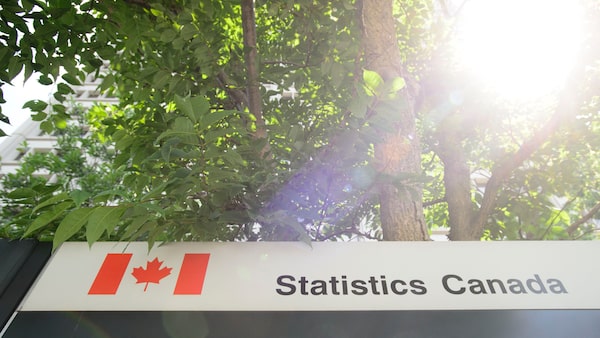
Statistics Canada’s monthly Labour Force Survey estimated that employment rose by 53,700 in the month, led by big gains in health care and in the hotels-and-restaurants sector.Sean Kilpatrick/The Canadian Press
Canada’s unshakable labour market added another 53,700 jobs in September, building on August’s big gains as full-time jobs surged and wages accelerated.
But the hiring binge left economists perplexed, as job growth continues to far outpace the underlying economy. Some worry that the employment gains may actually be a sign of an increasingly nervous business community, as companies bulk up on staff instead of making needed capital investments, amid deep uncertainties about trade deals and the global economy.
“Jobs have been running too hot relative to growth trends – it is likely the replacement of capital for labour is occurring,” Ian Pollick, head of North American rates strategy at Canadian Imperial Bank of Commerce, said in a research note Friday.
The strong numbers decrease the odds the Bank of Canada will cut interest rates soon. The central bank has been holding its key rate steady at 1.75 per cent, despite cuts at many other central banks over the past few months amid the deteriorating and increasingly risky global outlook.
“Between the rock-solid job market and the bounce-back in housing, it’s hard to see a rate cut in October,” said Douglas Porter, chief economist at Bank of Montreal. “Any cut at all is fading.”
Statistics Canada’s monthly Labour Force Survey, released Friday, said the employment growth was led by big gains in health care and in the hotels-and-restaurants sector. Economists had anticipated a much more modest increase, perhaps in the 10,000 range, after the economy had added 81,100 jobs in August. It marks the biggest two-month growth in the Canadian job market in more than seven years.
The unemployment rate fell to 5.5 per cent, just one-tenth above the four-decade low hit earlier this year, and down from 5.7 per cent in August.
Growth in average hourly wages rose to 4.3 per cent year over year, up from 3.7 per cent in August. That returned wage growth to close to July’s 4.5 per cent, the fastest pace since the Great Recession.
September’s job gains were driven by full-time employment, which jumped 70,000. Part-time jobs slipped 16,300. Economists noted, however, that private-sector jobs – a key component of the labour market – fell 21,000, while the growth came from the public sector (up 32,600) and self-employment (up 42,100).
Employment has increased by more than 450,000 jobs, or 2.4 per cent, over the past 12 months. But the most recent gross domestic product figures, for July, show that the overall economy has grown by just 1.3 per cent year over year. Economists don’t expect growth in the second half of the year to be much better, with forecasts of about 1.5 per cent annualized.
“Job growth has been chugging along at quite a pace, but it’s not really reflected in the other economic data,” said Doug Porter, chief economist at Bank of Montreal. “It’s not a reflection of economic strength.”
He suggested that the employment boom may be more related to Canada’s population growth, fuelled primarily by relatively high levels of immigration. Growth in employment is only slightly ahead of the increase in the size of the labour force over the past 12 months, at 2.1 per cent.
“I think it’s as much a supply story as a demand story,” he said.
Many economists believe that businesses have hired heavily to make up for their reluctance to invest in machinery, equipment and facility expansions, as the global climate remains decidedly risky for long-term business investments, with growth slowing, the global manufacturing sector slumping, and the U.S.-China trade war casting uncertainty over the future.
CIBC’s Mr. Pollick noted that many of the sectors with the biggest job gains have also had the lowest capital spending relative to their historical norms – including the professional, scientific and technical services segment, which alone accounts for one-quarter of the job growth in the past year.
Regardless, economists said the strong job numbers decrease the likelihood that the Bank of Canada will cut interest rates in the near term. The central bank has been holding its key rate steady at 1.75 per cent, despite cuts at many other central banks over the past few months amid the deteriorating and increasingly risky global outlook. The bond market is now pricing in almost no chance of a cut by the bank at its next rate decision in late October, and sees a cut as unlikely well into next spring.
“Between the rock-solid job market and the bounceback in housing, it’s hard to see a rate cut in October,” Mr. Porter said. “Any cut at all is fading.”
 David Parkinson
David Parkinson